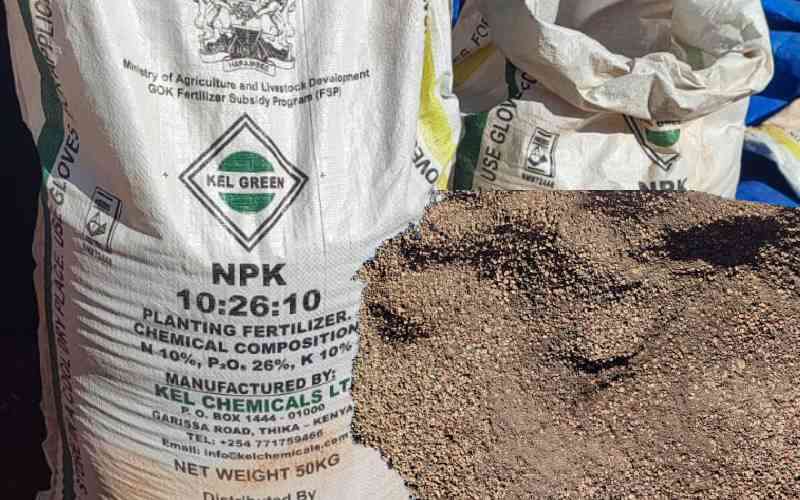The role of fresh fruits and vegetables in nutrition is well recognised and in recent years, Kenyan consumers have increasingly embraced healthy diet options, therefore consuming more of fresh fruits and vegetables. Fruits and vegetables contain micronutrients, fibres and plant proteins which are important for daily diet, and therefore are integral to a diversified nutritious diet. This coupled with an expanding middle class, is increasing consumer demand for variety and availability.
While it is important that the domestic consumption of fresh horticultural produce continues to increase, negative food safety reports linked to fresh fruits and vegetables in the domestic market threatens this.
Sampling and testing
Since 2014, there have been quite a number of mentions based on sampling and testing by academia and researchers of pesticide residues, heavy metals and pathogenic micro-organisms on fresh fruits and vegetables especially in Nairobi. The reports cited the presence of Calcium Carbide in ripened bananas, mangoes and oranges and heavy metals (Lead and Cadmium), pathogenic micro-organisms and pesticide residues in leafy vegetables.
Horticultural produce gets contaminated on and off farm and therefore food safety interventions are required along the entire value chain. Poor production and handling practices have resulted in contamination by harmful bacteria and fungi.
On the farm, micro-organisms enter the value chain through the use of contaminated surface water used for irrigation and application of incorrectly composted animal manure.
The rise in urban population has driven up peri-urban production and use of waste water in farming due to the rising scarcity in irrigation water which has further elevated the risk of microbial contamination. Weak enforcement and implementation of good agricultural practice in production also provides a loophole for indiscriminate use of (fake) pesticides by some farmers.
Other food safety hazards and mostly microbial, originate during storage, transportation and retailing, as a result of poor hygiene and handling practices. The use of tables or platforms is limited, and it is not uncommon to find produce in informal markets placed on the ground and on walkways, in contact with dirt. It is not unusual in some markets to find garbage bins or waste piles next to traders selling fruits and vegetables. Furthermore, unscrupulous suppliers and traders also use chemicals to hasten the ripening of fruits like mangoes and bananas.
Actors in informal markets rarely have formal training in food safety, and few are aware of food safety risks related to the produce that they sell, and regulations that apply to their activities.
Lack of knowledge
While formal markets such as supermarkets and green grocers are more organised, most sourcing teams and food handlers at the points of sale lack the requisite food safety knowledge. The source of produce in many cases can be identified but growing and production details are inadequate. Supply chain parties are unable to link outputs to production information like field locations, seed, fertilizer, spraying details and detailed harvesting information.
The value chain approach to food safety and quality recognises that the responsibility for the supply of safe produce is shared by all operators involved in production, processing, trade and consumption of food, including regulatory support.
Chapter 3 of the draft National Food and Nutrition Security Policy 2011, addresses food safety and quality. The objective of the policy is to ensure safe high quality food by creating public awareness on relevant issues, setting, promoting and enforcing appropriate guidelines, codes of practice standards, and regulations.
There are 20 Acts of Parliament that govern food safety and the responsibility of ensuring food safety is shared amongst 17 government ministries and regulatory agencies. The National Food Safety Co-ordination Committee was therefore established as an inter-ministerial body to increase food safety and quality awareness and initiate revision and harmonisation of the relevant Acts of Parliament.
Enforcement has, however, has been weak. This coupled with inadequate resources and technical capacity to manage effective surveillance has led to quality inefficiencies and exposure to food safety risks for domestic consumers.
Stay informed. Subscribe to our newsletter
Regulations alone?
A national commitment to healthy and safe food systems goes beyond regulations; it requires an integrated approach by public and private sector actors. As private sector companies strive to produce safe and quality produce, government should provide appropriate guidelines and surveillance. Robust and sound national governance and appropriate and co-ordinated food safety surveillance systems are required across the food chain in order to translate standards and regulations into effective food control systems.
Both public and private sector should promote enhanced awareness and adoption of practices to prevent and mitigate such hazards.
Surveillance of food systems through inspection and testing services is essential to ensuring that players in the value chains comply with policies and regulations and that the risks of food-borne diseases are managed effectively.
Ms Kadenyi is Advisor, HortIMPACT Programme, Hivos East Africa
 The Standard Group Plc is a
multi-media organization with investments in media platforms spanning newspaper
print operations, television, radio broadcasting, digital and online services. The
Standard Group is recognized as a leading multi-media house in Kenya with a key
influence in matters of national and international interest.
The Standard Group Plc is a
multi-media organization with investments in media platforms spanning newspaper
print operations, television, radio broadcasting, digital and online services. The
Standard Group is recognized as a leading multi-media house in Kenya with a key
influence in matters of national and international interest.
 The Standard Group Plc is a
multi-media organization with investments in media platforms spanning newspaper
print operations, television, radio broadcasting, digital and online services. The
Standard Group is recognized as a leading multi-media house in Kenya with a key
influence in matters of national and international interest.
The Standard Group Plc is a
multi-media organization with investments in media platforms spanning newspaper
print operations, television, radio broadcasting, digital and online services. The
Standard Group is recognized as a leading multi-media house in Kenya with a key
influence in matters of national and international interest.








